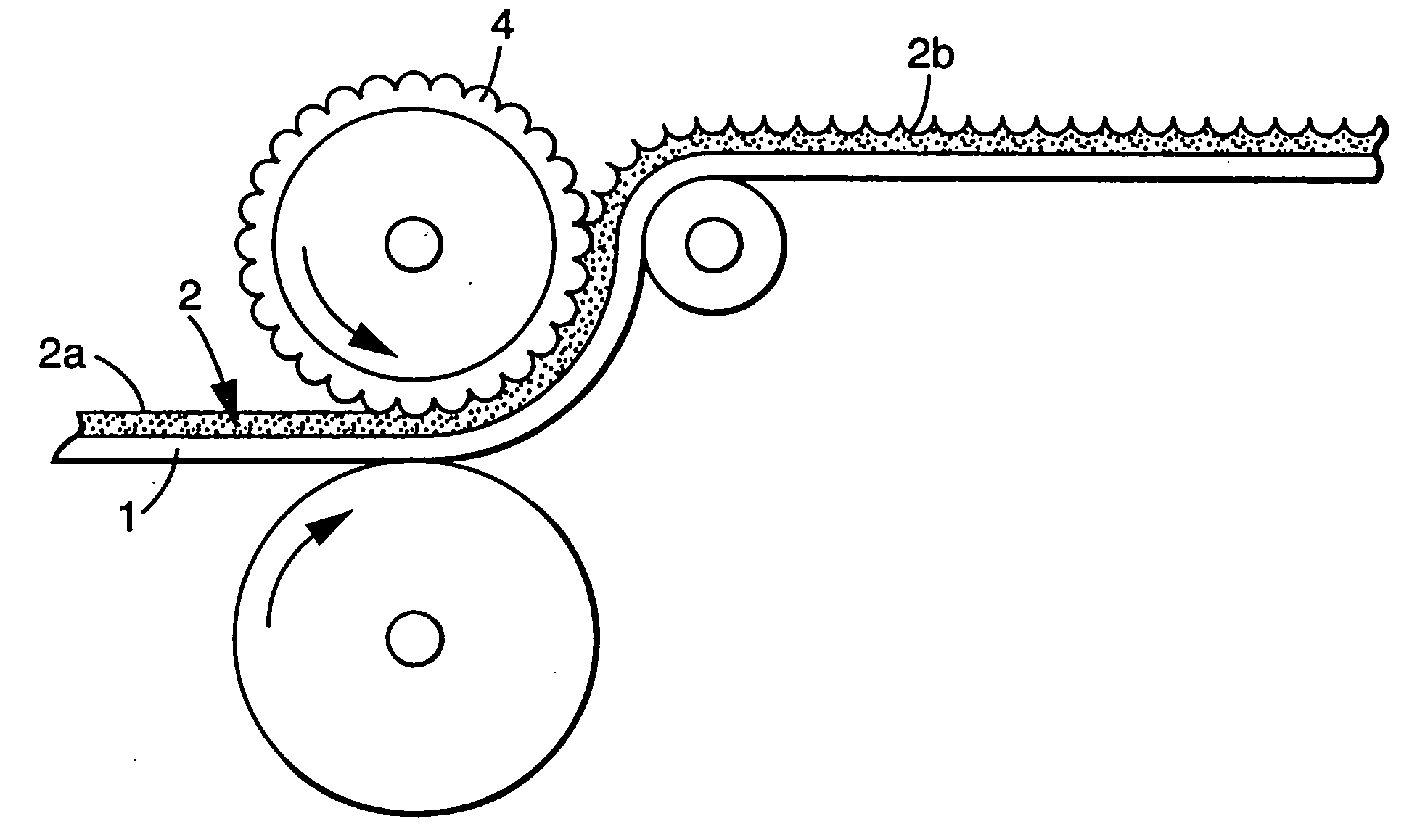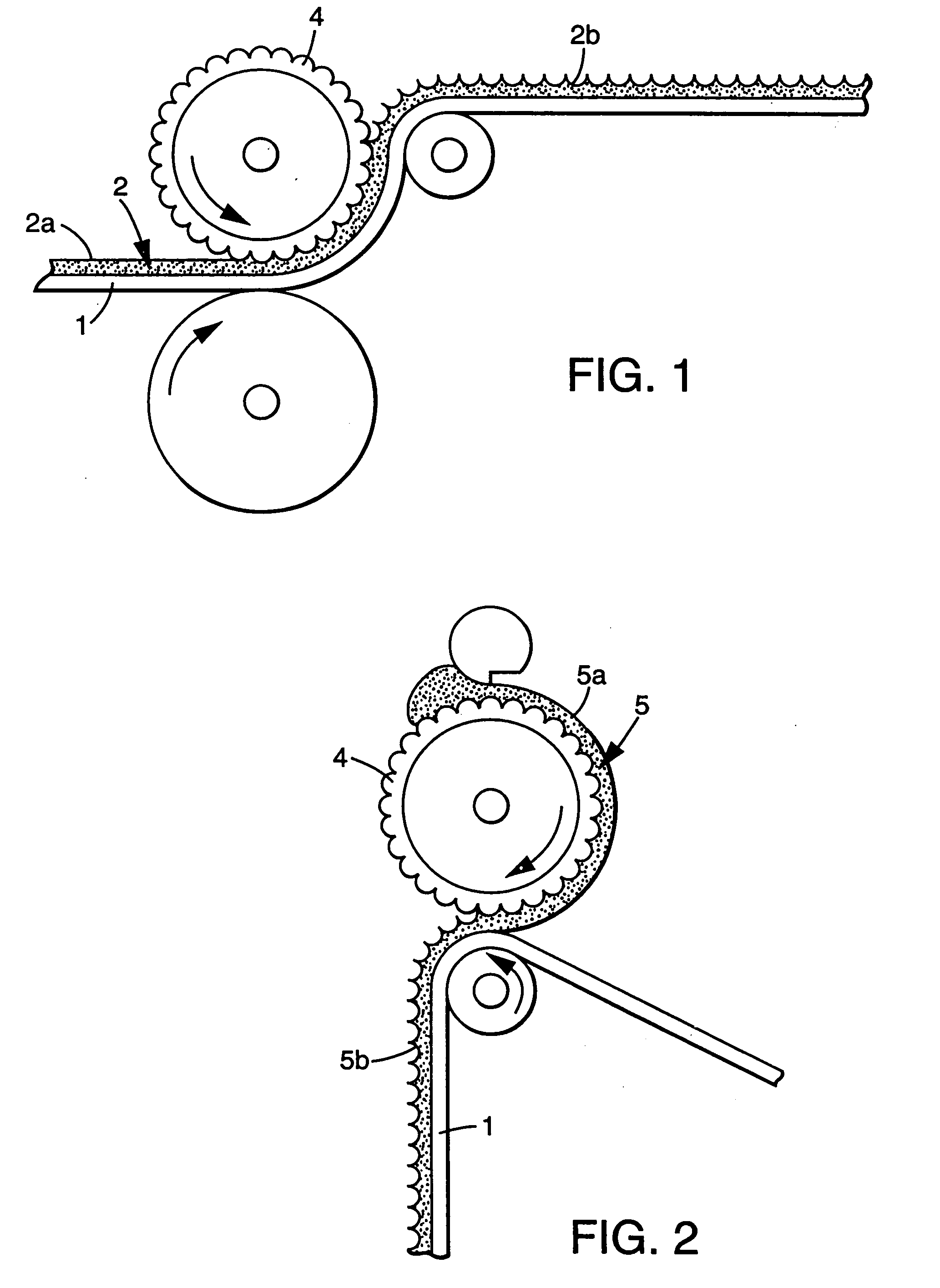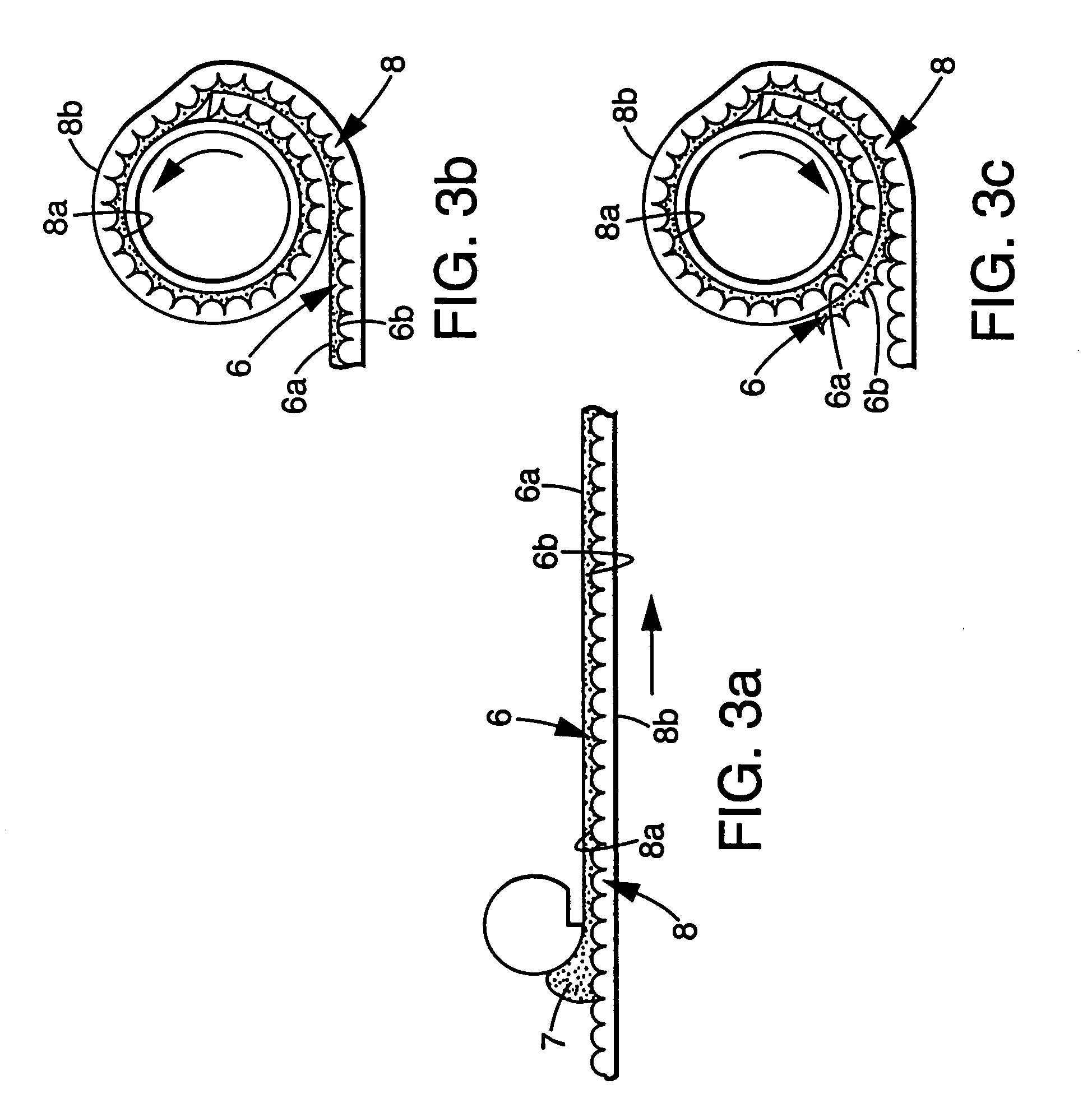Pressure-sensitive adhesives having microstructured surfaces
a technology of microstructured surfaces and adhesives, which is applied in the direction of film/foil adhesives without carriers, film/foil adhesives, synthetic resin layered products, etc., can solve the problems of affecting the repositionability of these adhesives, and achieve the effect of reducing, constant or increasing long-term adhesion
- Summary
- Abstract
- Description
- Claims
- Application Information
AI Technical Summary
Benefits of technology
Problems solved by technology
Method used
Image
Examples
example 1
Preparation of 10K ACMAS and 35K ACMAS Molding Material
[0146] A diamino functional polysiloxane terminated on both ends with ethylenically unsaturated groups were prepared by the method described in U.S. Pat. No. 5,091,483 (Mazurek et al.), incorporated herein by reference and described below. A 500 Ml 3-necked round bottom flask equipped with thermometer, mechanical stirrer, dropping funnel, and dry argon inlet was charged with 7.74 g of bis(3-aminopropyl)tetramethyldisiloxane and 36 g of octamethylcyclotetrasiloxane (D4) which had been previously purged for 10 minutes with argon. The flask contents were heated to 80° C. with an oil bath, following which a trace amount (about 0.03 to 0.05 g) of an anhydrous 3-aminopropyl dimethyl tetramethylammonium silanolate catalyst was added via a spatula to the flask contents. The reaction mixture was stirred at 80° C. and after 30 minutes of stirring had become quite viscous. Vapor phase chromatography (VPC) showed that the end-blocker had c...
example 2
[0148] This example demonstrates the blending of the ACMAS materials of Example 1 for the preparation of the microstructured molding tools and the making of the microstructured molding tools used in imparting microstructures to the pressure-sensitive adhesives of the present invention. 10,000 MW ACMAS (5.0 g) was mixed with 35,000 MW ACMAS (5.0 g) and 0.02 g 2-hydroxy-2-methyl-1-phenyl-propan-1-one, available from EM Industries under the tradename Darocur™ 1173 and was coated to a thickness of 2 mm against a microstructured surface. After covering the non-structured surface of the coating with a polyester film, the mixture was then exposed to UV irradiation at 2.6 mW / cm2 (Sylvania Blacklight) for 10 minutes and the mold was separated from the microstructure surface.
[0149] The following microstructured molding tools were made using the following microstructured surfaces:
example 3
Convex Hemispheres (Positive Features)
[0150] A microstructured molding tool having convex hemispheres as features on its surface was prepared in the following manner from a glass microsphere embedded liner made in accordance with U.S. Pat. No. 4,025,159 (McGrath), incorporated herein by reference: Glass microspheres ranging between about 50 and 80 μm were embedded by standard procedures to about 40 percent of their diameter in a 25 μm-thick layer of polyethylene which is carried on paper. The glass microspheres are released from the polyethylene, leaving an aperiodic concave hemispherical microstructured polyethylene liner as shown in top plan view in FIG. 6. The polyethylene liner was then attached to a glass plate and the glass plate bordered by a gasket. The microstructured molding tool having a convex (i.e., positive) microstructure was made by coating and curing a layer of liquid silicone rubber as described in Example 2 against the polyethylene liner and separating the cured ...
PUM
| Property | Measurement | Unit |
|---|---|---|
| height | aaaaa | aaaaa |
| glass transition temperature | aaaaa | aaaaa |
| height | aaaaa | aaaaa |
Abstract
Description
Claims
Application Information
 Login to View More
Login to View More - R&D
- Intellectual Property
- Life Sciences
- Materials
- Tech Scout
- Unparalleled Data Quality
- Higher Quality Content
- 60% Fewer Hallucinations
Browse by: Latest US Patents, China's latest patents, Technical Efficacy Thesaurus, Application Domain, Technology Topic, Popular Technical Reports.
© 2025 PatSnap. All rights reserved.Legal|Privacy policy|Modern Slavery Act Transparency Statement|Sitemap|About US| Contact US: help@patsnap.com



